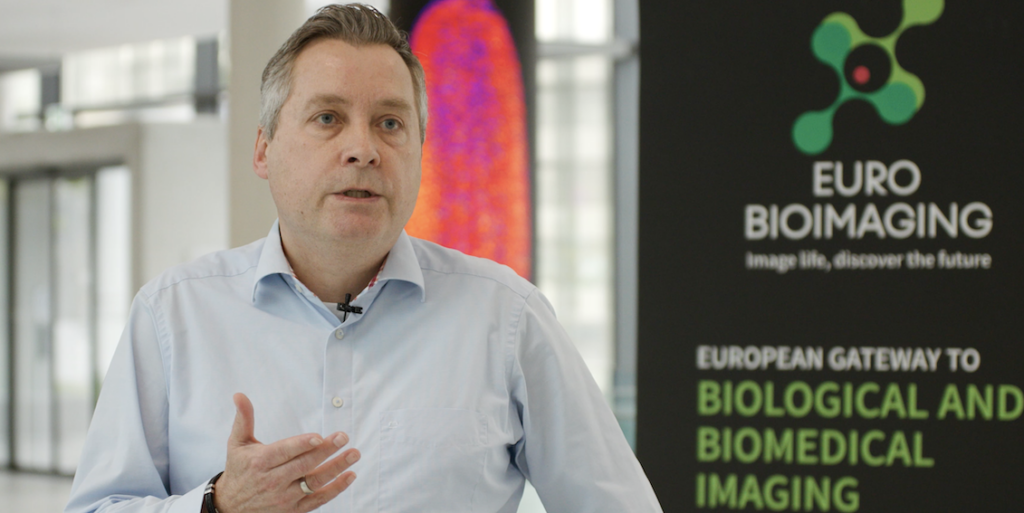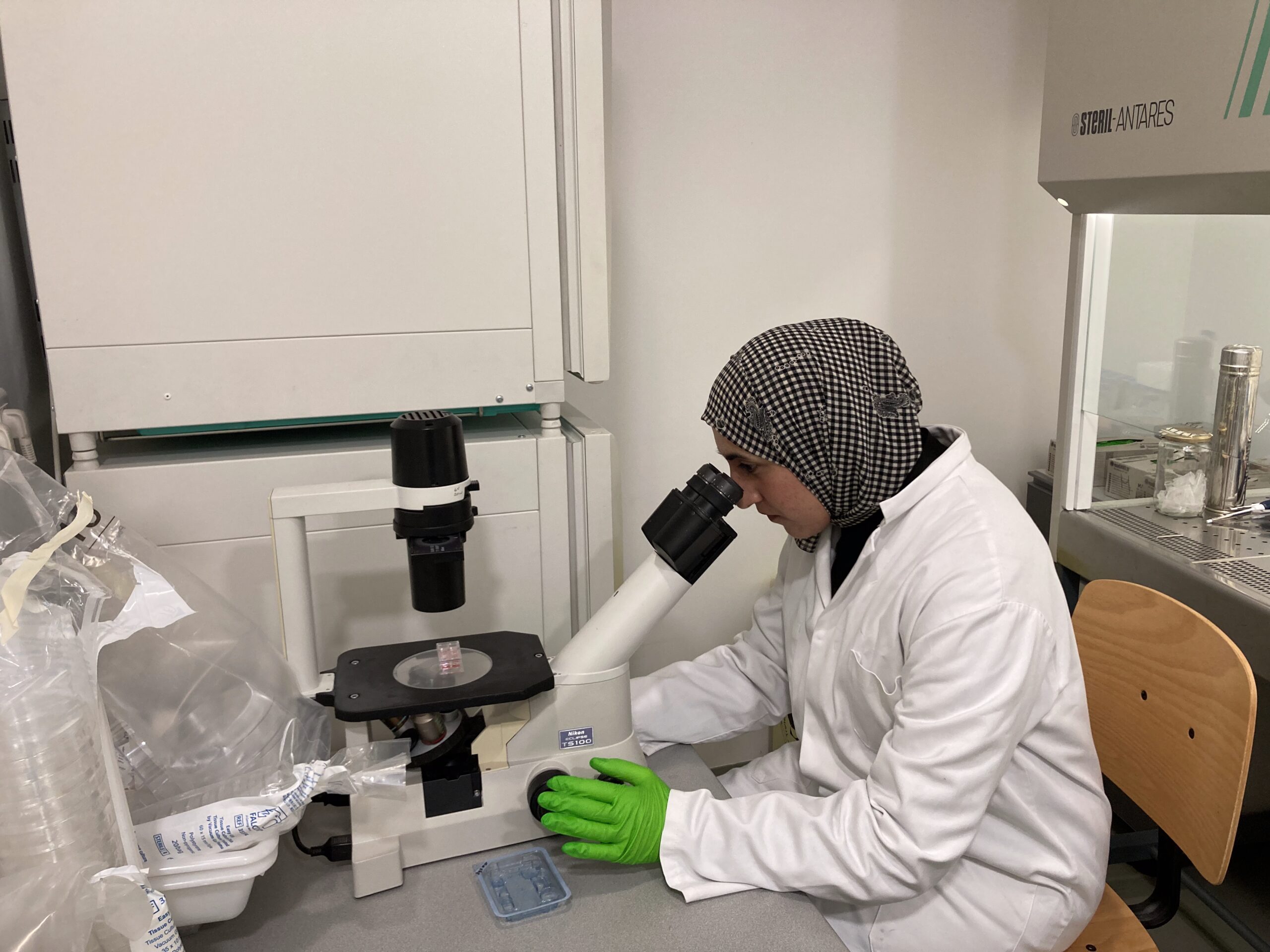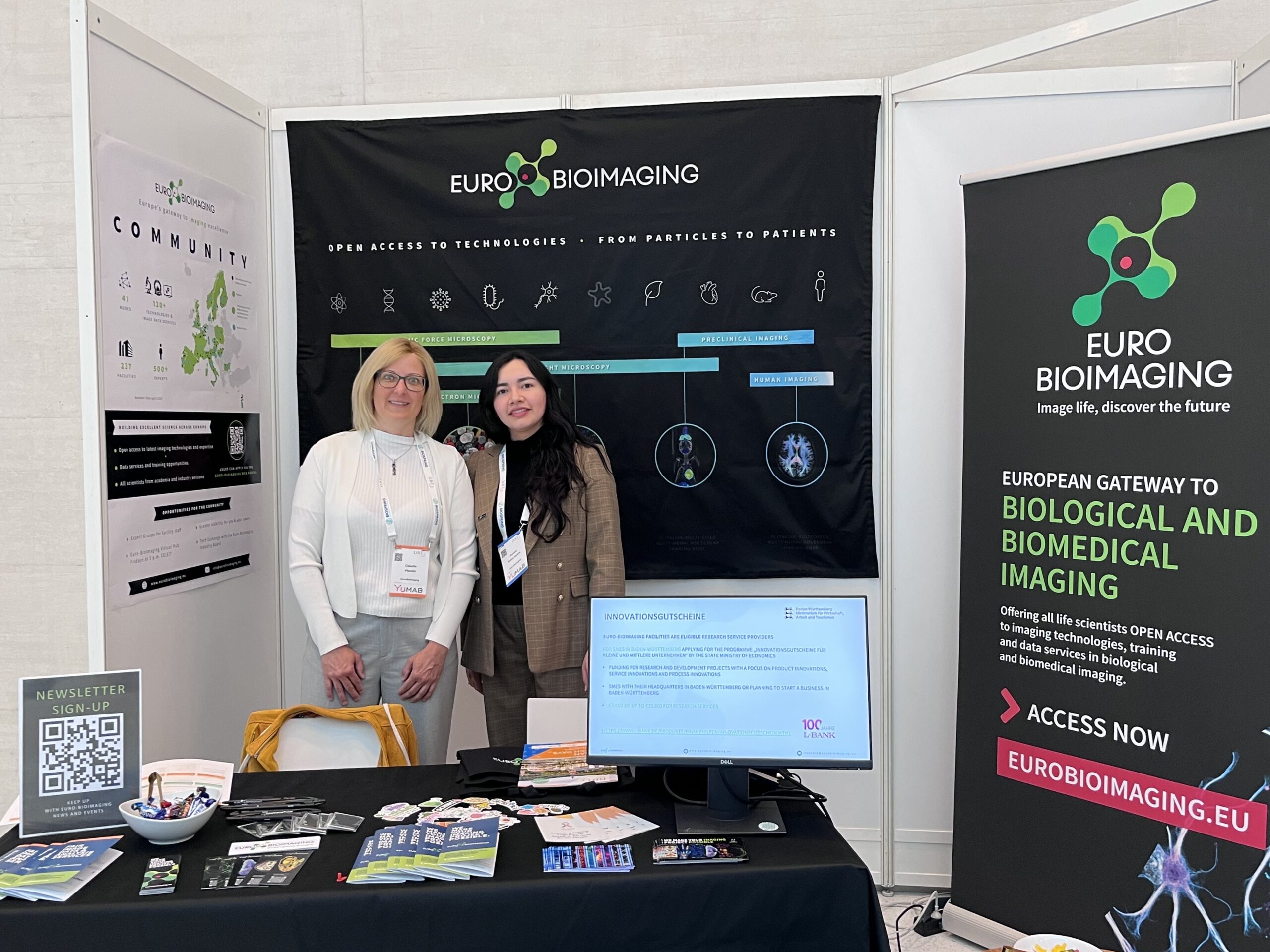
EBIB Anniversary: Partnership requires long-term strategic thinking and focus
Interview with the first Industry Board Chair Dr. Christoph Thumser
The Euro-BioImaging Industry Board (EBIB) provides a platform for companies in the Imaging sector to communicate and collaborate with the wider Euro-BioImaging community of imaging facilities and users. It has been set up as an independent professional entity to support the interaction and knowledge exchange between the Imaging industry, other industries as users of imaging technologies and the wider academic research environment with the goal of strengthening Imaging in European research.
On 22 May 2024, the Industry Board celebrates its 10th anniversary. As we look back back on 10 years of successful collaboration between Euro-BioImaging and its industry partners, we will talk to some of the people who have championed and shaped the interaction from the very early days.

Christoph Thumser, the former Director of Global Business Management Life Sciences at Leica Microsystems and today Vice President at Eppendorf, was the first Industry Board chair from 2014 to 2019. In our interview, he reflects on the early challenges of gathering industry support and finding a way to align the Board with the Euro-BioImaging governance (you can also watch a shorter version here).
Christoph, as the first chair of the Euro-BioImaging Industry Board, what were some of the key challenges you faced in establishing this platform for collaboration between industry and the research infrastructure?
One of the challenges was to make it clear to the various board members in the industry what was in it for them. You have to have a far-sighted strategic view to recognize the benefits. Depending on the individual company representatives, the interest was sometimes very short-term. Aligning expectations and creating mutual benefits was the biggest challenge at the beginning.
The Industry Board predates Euro-BioImaging achieving official ERIC status by 5 years. What was the role of the industry towards Euro-BioImaging through its preparatory phases and how did the industry support Euro-BioImaging?
In the very early days, we created the Euro-BioImaging Industry Board as an independent advisory body for Euro Bioimaging. We developed a strategy that provides three main benefits for both parties. One aim is to provide the Nodes within the Euro-BioImaging organization with new technologies in the field of imaging and microscopy. Secondly, we offer joint training to users in the hubs. And most importantly, in my opinion, is the joint approach to the funding bodies.
To help Euro-Bioimaging succeed, for example, we have launched an initiative aimed at bringing together more companies from the industry to join us and support the Euro Bioimaging Organization.
In my opinion, it was a key element that the Industry Board and Euro-BioImaging speak with one voice as partners and pursue common goals. The Industry Board produced a position paper very early in the process, in 2012, to emphasise the importance of Euro-Bioimaging to the research community. This paper was signed by all Industry Board companies.
Was there a specific point when you became convinced that Euro-BioImaging would actually become a reality?
When you work in industry, you are used to very fast and quick decision-making processes. If you look at Euro-Bioimaging, especially the preparation phase and the time it took to convince the stakeholders, to set up the whole administration and also the legal boundaries that you have to respect - this process was very lengthy. You can ask yourself whether we on the industry side believed in all this because it took so long. For me, that was never a question. I was always convinced of the benefits we create when we provide open access to technology for our scientists around the world.
What have been the most significant achievements and impacts of the Industry Board over the past 10 years?
Probably the fact that new technologies are made available to researchers across Europe. This facilitates scientific exchange and supports our goal of becoming stronger and more competitive in science. From an industry perspective, this supports Europe remaining a region that is very competitive in the field of imaging and home to many of the strongest companies in optics and imaging.
How have the past 10 years helped strengthen the relationship between industry and the research community?
I truly believe that during this long journey, in the preparatory phase and also now in the operational phase, many personal relationships have been built between researchers and imaging specialists from academia and industry. These relationships are crucial to the success of both parties.
Is there anything in the relation between Euro-BioImaging and the Industry Board that you were aiming for when you started your work that has not been realised yet?
One of the main objectives we set out in the early stages was that the Industry Board and the companies involved in the Industry Board could work with Euro Bioimaging to develop new technologies or work on application development. I know this is a direct relationship and it is difficult to use the Industry Board as a platform to drive this forward. But the Industry Board could help develop those stakeholder relationships. So I think this is an important point to pursue in the future.
Are your original aims still relevant today, or would there be different priorities?
It is difficult for me to say, as I am no longer so close to the subject and the microscopy industry. But what I can say is that the partnership between science and industry in the life sciences is even more important than it used to be. I now work at Eppendorf SE in Hamburg and we have been supporting science for many years. One example is the Young Investigator Award, which we are celebrating here at EMBL this June.
What advice would you give to the current and future chairs of the Industry Board to ensure its continued success and impact?
Keep the long-term goal in mind. Do not try to focus on short term return of investment. Partnership between cutting edge science and cutting-edge technology requires long term strategic thinking and a focus on the long-term benefits.
Thank you very much Christoph for sharing these insights and the history behind building the Industry Board. Before we part, do you have a favourite memory from the early days of establishing the Industry Board that gives a glimpse into the personalities and dynamics involved?
Yes, there is indeed something very remarkable. That was the moment during a Euro-BioImaging Interim Board meeting in Warsaw in 2014 when the representatives of the Member States had to approve the continued funding of the Euro-BioImaging Project Manager. At that time, it was Antje Keppler. As we know, Antje is now the Section Director of the Euro-BioImaging Bio-Hub. She can be really proud of what she has achieved so far.
More news from Euro-BioImaging


